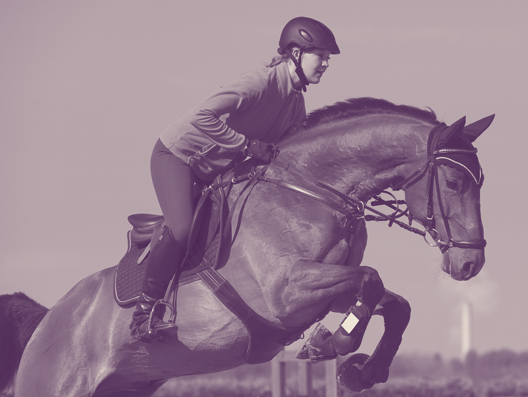
When I ask my riders what they are experiencing with their horses and what challenges they are facing, the vast majority of them usually prioritise the well-being of their horse above themselves. I have been a rider myself all of my life so I know just how true this is. When we experience issues with our horses, whether this be mentally or physically, we go through a huge checklist to determine the root and the cause. This includes: their shoeing, feed, tack, teeth, any veterinary treatment for ailments or injury, allergies, physiotherapy, massage, methods of training, bedding, stabling, environmental factors….this important checklist goes on. However, one of the last thought processes is actually considering YOU. How do I affect my horse as a rider? Talent and ability aside, the same factor that is present in EVERY rider, no matter the gender or age, is how YOUR body impacts your horse’s. Your horse’s body will reflect what is going on in YOUR body, as our horses have to accommodate massively to our bodies in order to operate their own, and then also try to effectively and willingly perform whatever task we are asking of them. Several of the problems that your horse may present with could in fact be coming from your own issues. The list of these issues will be easily recognised by you as being terms applied to your horse’s way of going.
• Stiffness
• Imbalance
• Disconnection
• Seized back and hip area (particularly painful in sitting trot for both horse and rider!)
• Inability or difficulty moving your back independently of your seat- seat bones come off the saddle when you turn your body and in turn can affect positioning of where your legs are positioned, which can thereby cause blocking and confusion to your horse.
• Weakness in areas of your body causing you to compensate and perhaps lean to one side which immediately unbalances your seat and this can be represented with the horse “leaning” on one rein more than the other….and so the list goes on!
The areas of the body that I work on with absolutely ALL of my riders are pelvic stability, correct alignment, and the key word- SUPPLENESS. The free, balanced, yet controlled movement of our pelvic area is the core foundation of setting up what happens above and below our anatomy. Some of these may sound familiar:
• Tight hamstrings pushing our bums out of the saddle, and legs away from wrapping around the horse’s barrel, with less support for our position and helping our horses keep connected and “Uphill”
• Shoulders high up on our body and coming over so we are stooped and encouraging the horse onto the forehand.
• Perched on your groin with excessive curve in the back which encourages the horse to dip its back and lose the hocks out the back…and so the list goes on!
Many horses will continue to perform regardless of their rider through talent, sound temperament and sheer love of their job…but just how much do they have to compensate to our anatomical issues and for how long can they sustain this happily and WILLINGLY without pain and long-term negative effects. If there is a solution to teaching our own bodies to maintain balance and equilibrium, then perhaps this is also an empathetic way to look after our horses well-being, as well as our own, and keep the strong bond and partnership with our loved animals.
The pleasure of working with riders is rewarded ten-fold when I hear feedback of the achievements of both horse and rider following treatment. This isn’t just seen with successful competition results and injury-free productive schooling, lessons or clinics. It is much more than that. It is the overall improvement in the rider’s relationship with their horse and belief in themselves.
“I ask her to do something and she just does it now- Less of the moodiness and is all cuddly after schooling now!”
“I can put my body in the right position and set him up correctly so he can get the side steps! He seems to understand now that I am asking him properly. So happy Hurrah!”
“We actually jumped through some skinnies yesterday as I can actually keep my left leg on now- no ducking out the left hand door at the last minute!”
If you can relate to any of the above and would like some help, I would love to hear from you and about your experiences with your horses/ponies. I am confident I can help and you, and your horse will be happier and more connected. Optimise you, optimise your riding!
Melissa Castiel, Equine Rider Therapist, PhysiOptima

